Dujiangyan Irrigation Project: the oldest and only surviving no-dam irrigation system in the world
Construction of the Dujianyang Irrigation system located in Chengdu, Sichuan Province, began in the 3rd century BC, and it continues to control the waters of the Minjiang river and distribute it to the fertile farmland of the Chengdu plains.
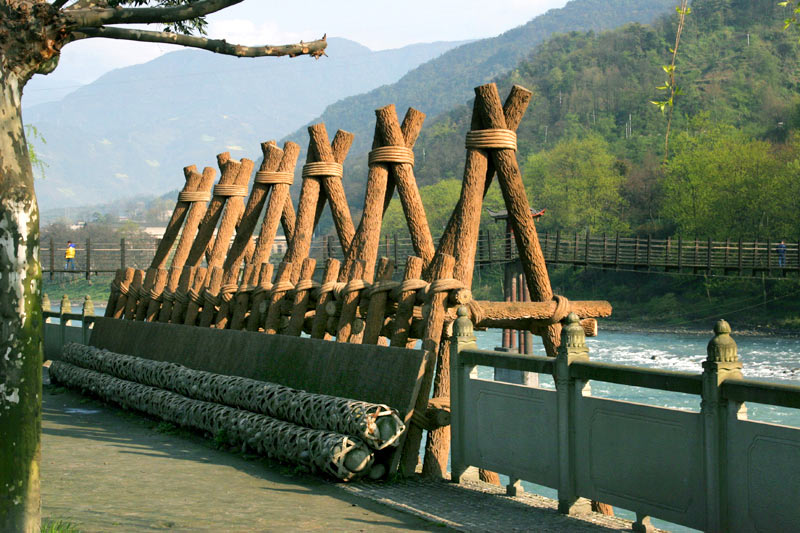
ID:020-8134 The Dujiangyan Irrigation Project Picture Sources:ccnpic.com
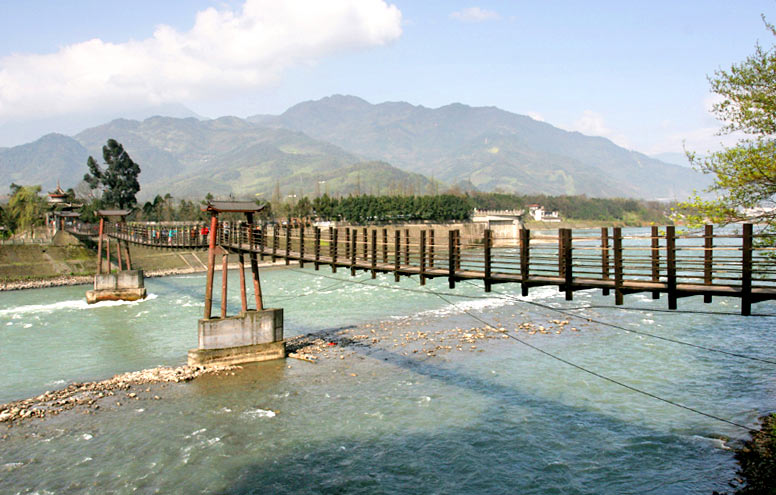
ID:020-8187 The Dujiangyan Irrigation Project Picture Sources:ccnpic.com
Dujiangyan is the oldest and only surviving no-dam irrigation system in the world; and a wonder in the development of Chinese science. The project consists of three important parts, namely Yuzui, Feishayan and Baopingkou scientifically designed to automatically control the water flow of the rivers from the mountains to the plains throughout the year.
The Dujiangyan Irrigation Project is long-established water conservation works. It is 56 kilometers (34.8miles) west of Chengdu at Dujiangyan city lying in the middle reach of Minjiang River, which is the longest tributary of Yangtze River.
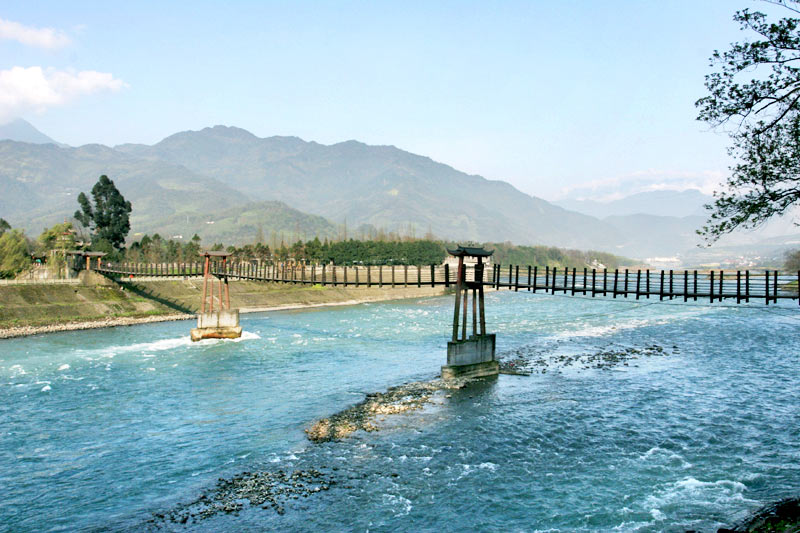
ID:020-8086 The Dujiangyan Irrigation Project Picture Sources:ccnpic.com
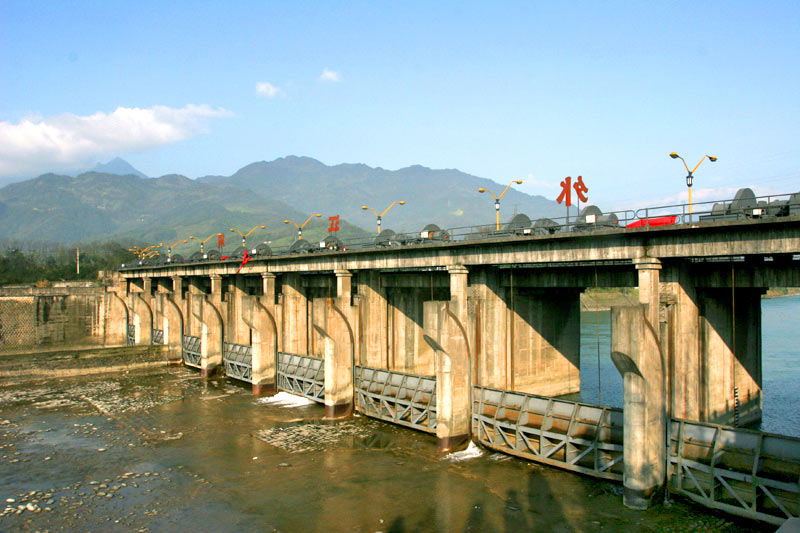
ID:020-8114 The Dujiangyan Irrigation Project Picture Sources:ccnpic.com
Since ancient times the Minjiang River has surged downward from Mt. Minshan thrusting itself into the Chengdu Plain. When reaching the flatlands the rivers speed slowed down abruptly. Thus the watercourse filled up with silt making this area extremely vulnerable to flooding. The people living on the Chengdu Plain consequently suffered a great deal from frequent floods.
Around BC 250 during the Warring States Period, Libing, a governor of Shu in Qin state (present Sichuan Province) with his son directed the construction of Dujiangyan. The governor gave up the old ways of dam building which was simply try to catch the floodwaters. Instead he employed a new method by channeling and dividing the water to harness the Minjiang River. He accomplished this by separating the project in to two main parts: the headwork and the irrigation system. The project effectively put the flooding waters under control.
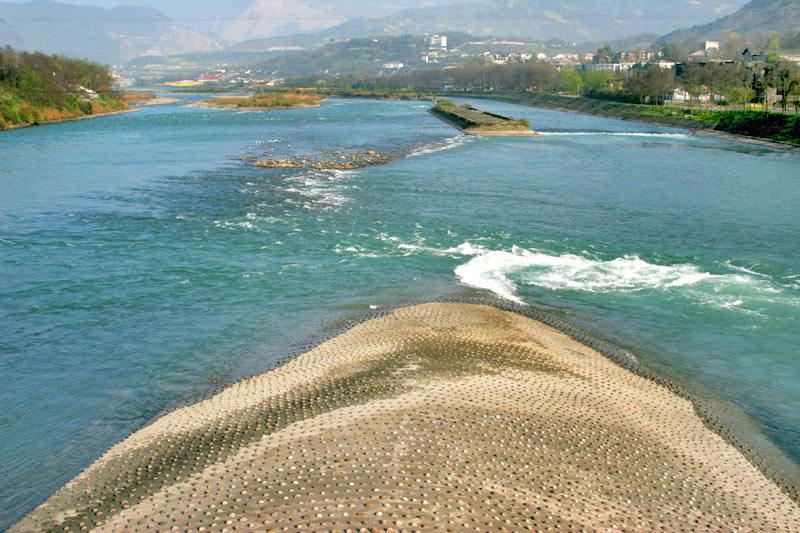
ID:020-8104 The Dujiangyan Irrigation Project Picture Sources:ccnpic.com
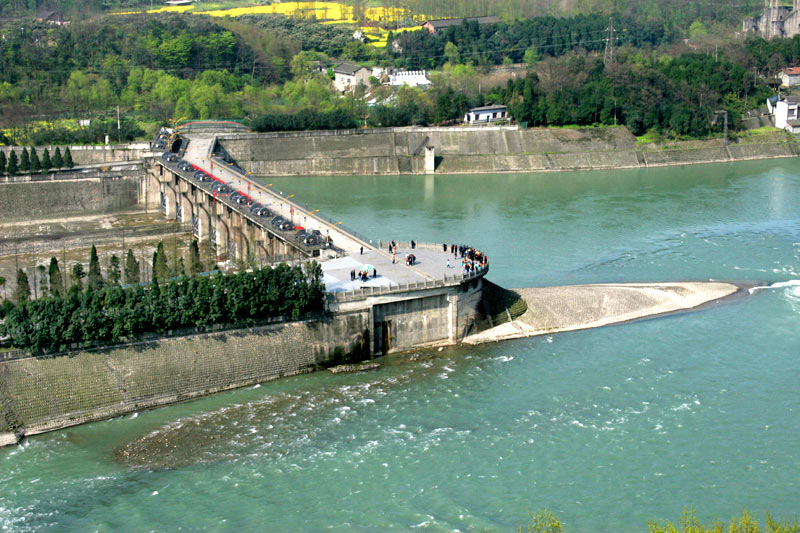
ID:020-8238 The Dujiangyan Irrigation Project Picture Sources:ccnpic.com
For over two thousand years the whole system has functioned perfectly, serving as not only as flood prevention but also as an immense source for irrigation as well as a means to facilitate shipping and wood drifting. It has contributed greatly to the richness of Chengdu Plain and helps it earn its reputation as "The Land of Abundance".
There is a magnificent bridge called the Anlan Cable Bridge crossing the Minjiang River above Yuzui, which is the most scenic place in Dujiangyan. The construction of the bridge originally commenced before the Song Dynasty (960-1279). At that time, the body of the bridge was constructed with wooden blocks and the handrails were made of bamboo. Recently the wood and bamboo were replaced with steel and reinforced concrete to ensure the security of the visitors. Seen from afar, the bridge looks like a rainbow hanging over the river. From the bridge, you can clearly see the entire layout of the Dujiangyan system.
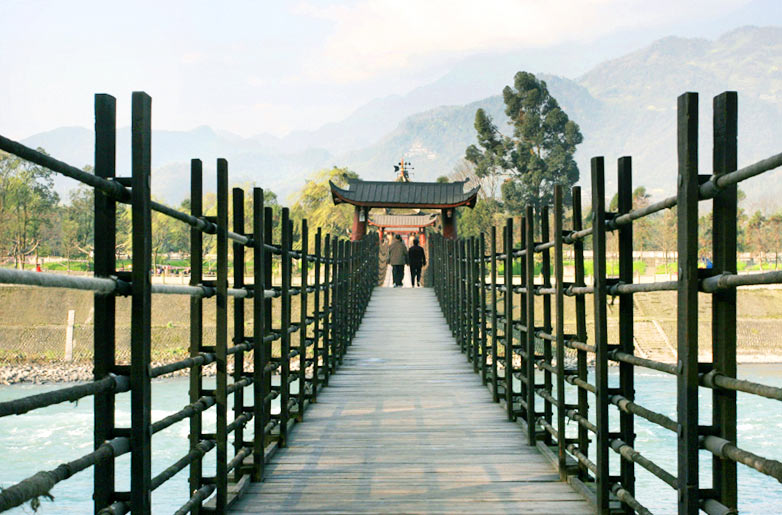
ID:020-8093 The Dujiangyan Irrigation Project Picture Sources:ccnpic.com
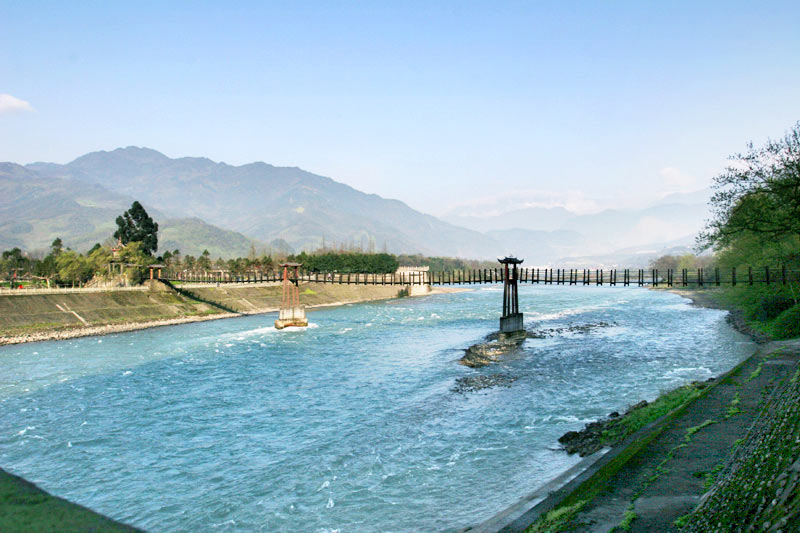
ID:020-8085 The Dujiangyan Irrigation Project Picture Sources:ccnpic.com
Well-known Yuzui, like a big fish lying in the Minjiang River, is a watershed dividing the river into two parts: inner river and outside river. Feisha Yan is a spillway that diverts the sand and stones of the inner river into the outer river. Baoping Kou, like a neck of a bottle, is used to bring water into the inner river from Minjiang. At the same time, Baoping Kou controls the amount of the intake water due to its reasonable location. These three parts interact with each other perfectly to form an effective water conservancy project. During the low-water season, 60% of the Minjiang water is brought into the inner river for irrigation while 40% of the water is drawn into the outside river. The situation is reversed in the flood season ensuring the water supply for irrigation and protection from flooding on the Chengdu Plain.
(CCNPIC Tony Xie)
(Article Resource: www.ccnpic.com)